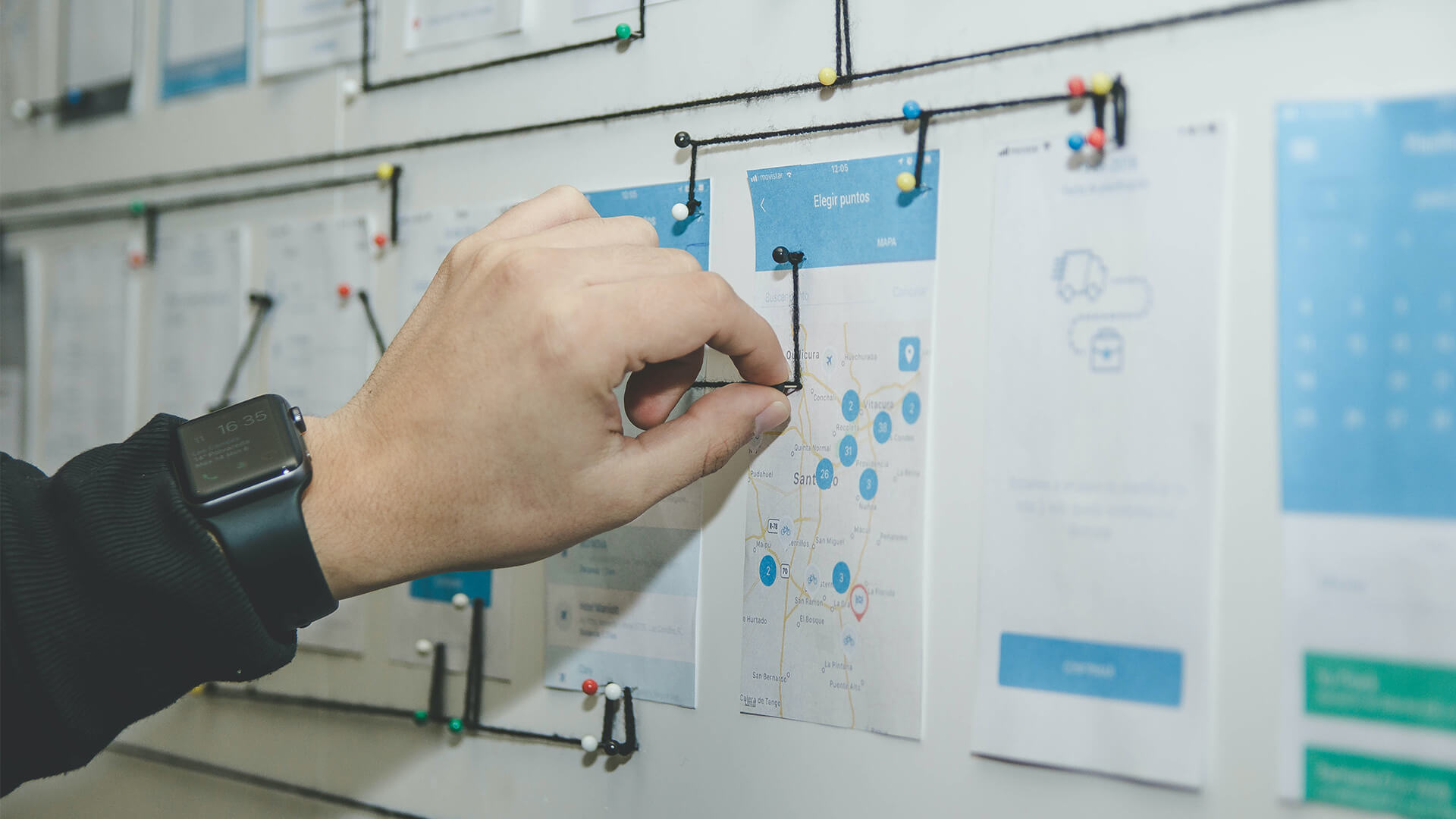
Although online shopping has increased by 300%, 56% of shoppers still visit a physical store before making a purchase, and 30% of direct-to-consumer brands say opening a store is a current priority. However, thriving retail business owners looking to attract customers to in-store purchases need precise mapping to know where their customers are and engage them.
Retailers need to know where their best customers are and how to reach out to them with relevant products and services—and they can do this successfully with retail mapping.
This article explains how retail mapping provides the contextual intelligence retailers need to meet their customers where they are.
What is retail mapping?
Retail mapping involves visualizing your stores in comparison to other stores in specific locations. It helps you identify the places your retail store will thrive and precisely where your competitors are. It provides the contextual intelligence you need to analyze your consumers’ location and make informed decisions with it.
Ultimately, you can decide how far you want to be from your competitors, the best on-site location for your retail business, and where your target audience is with retail mapping.
Why is retail mapping important?
Buyers’ purchase decisions are constantly evolving, and brick-to-mortar shoppers are no exception.
If buyers aren’t changing how they shop, they are changing where they shop. Research reveals millions of Americans have moved from their location due to the pandemic. Therefore, running a retail business is quite challenging for business owners now more than ever.
To combat this change, many retail owners are adopting retail mapping and the contextual intelligence it offers to know precisely where their customers have moved to and how to cater to their needs.
How to utilize retail mapping to meet buyers where they are
Conducting retail mapping to meet consumers’ expectations in their location involves specific steps. Find out below:
1. Combine retail mapping with contextual data
Retail mapping provides the contextual intelligence required to satisfy consumers’ needs where they are. For instance, the detailed location data of customers will supply store owners with the contextual intelligence necessary to drive significant business decisions, including location, supply chain,products, marketing approach, etc.
If store owners want to discover where their loyal customers are moving to, or if competitors are winning their customers over from a new or similar location, they can examine contextual data to find answers. Sometimes, first-party data may not suffice; they need contextual intelligence from third-party sources to know where their customers are.
This goes beyond sales records, online orders, catalogs, etc, to external customer data sources, such as third-party ad interactions, credit card transactions, and more.
2. Expand the retail footprint
After identifying consumers’ locations with the contextual data retail mapping supplies, the next step is to figure out where to reach them.
For instance, a study shows many people moved from highly populated cities to suburbs during the pandemic. Therefore, if retail owners are to work with this insight, the most apparent strategy would be to launch new stores in the suburbs.
Additionally, since many consumers now work remotely, another effective strategy would be to open new locations closer to where they live. This increases sales because consumers who value convenience will find retail shops nearby an easier way to shop.
However, this insight is not enough to open new locations where customers are; retail business owners must harness deeper contextual intelligence from retail mapping to ensure they make the best decisions. This includes average traffic times, previous transaction data, etc.
3. Meet consumers’ needs
Knowing where consumers are and finding the most suitable location isn’t where it ends. You must also gather contextual intelligence to analyze buyers’ needs and expectations. If your consumers are changing places, their lifestyle, interests, and habits may change too.
So, rather than use previous data to analyze consumer behavior, conduct new research. Are buyers more inclined to sustainability products? Are they more passionate about patronizing locally made products? Has the location change impacted their purchase decisions in any way?
Answering these questions can help you catch up with buyers purchasing trends. You can use the insights to structure how to meet their needs and improve their customer experiences.
4. Consider their “why”
In the process of using contextual intelligence from retail mapping to know consumers’ locations and meet their demands, it’s essential to find out their reasons for residing in a specific area or moving to a new place. Is it due to living conditions, traffic, accessibility, or proximity to work?
The answers to these questions will let you know what to consider when creating your location strategy. It will also help you avoid triggers that may impact their loyalty and relationship with your business.
Adopting retail mapping software
Functional retail mapping software is a critical aspect to automating the retail mapping process. It allows you to evaluate your data on an interactive map, plot store locations, identify where shoppers shop and competitors’ locations, etc. It supplies the analytics required to set up your store in a place that helps your business thrive.
Functions of a retail mapping software
A retail mapping software performs several functions to facilitate the retail mapping process, including:
1. Site selections
One of the most prominent functions of retail mapping software is providing accurate insight to select the correct location.
So, if you are about to start your new retail business and are looking for the best place to situate your store, you can use retail mapping software to visualize where most of your customers are to find the perfect place. Also, if you are relocating and wondering how to succeed in a new location, a retail mapping tool can help. You will get all the information you need on existing competitors in the area, where prospective customers buy from, and where to locate your store to attract these customers to you.
For example, you can identify competitions to know if you want to be close to them or find another spot. Rather than choose based on guesswork, retail mapping software will give you the correct data to make the most rewarding decision on location.
2. Geomarketing
Retail mapping tools aren’t restricted to choosing the correct location for a new store; you can also use them for marketing campaigns.
You can evaluate its contextual intelligence to channel your marketing efforts to a specific area. It offers geolocation intelligence to understand where consumers are and analyze their behaviors.
This way, you can structure your out-of-home marketing to attract audiences and meet their expectations.
Retail mapping software is not limited to on-site marketing campaigns; they can be used for online mobile advertising. They also allow you to visualize and examine mobile advertising campaigns. You will know how their location details affect lead generation, click-through rate, and cost-per-rating point, (CPR).
This insight improves geolocation strategies and lets you target your mobile campaign effectively for the best results.
3. Customer segmentation
Your target market has diverse interests, behaviors, and goals. Visualizing their data on a retail mapping software allows you to categorize your customers into segments. This prevents you from adopting a generalized approach to marketing and tailoring your business by category.
You will know the best way to approach them, the right products to recommend, and the right places to situate your business with the data an efficient retail mapping software provides.
4. Indoor mapping
Excellent retail mapping software enables indoor mapping. Insights garnered from buyers’ WiFi networks, GPS location, and indoor Apple Maps allow retailers to optimize layouts and get actionable data on pricing, operations, opening hours, etc.
What to consider when choosing a retail mapping software
Choosing an effective retail mapping software is critical to getting the best results in on-site location, competition analytics, and consumer behavior when opening a store.
Below are the essential factors to guide you in choosing the best retail mapping tool.
1. Type of data
Mapping software offers different data mapping capacities. Therefore, it’s crucial to figure out the type of data you want from your mapping data software.
Do you want geographical or relational data? Can the mapping software deliver the kind of data you need? What results do you want to achieve with the data provided? Identifying your goals will help you decide type of mapping software you need.
2. Customer base
Most retail mapping software offers both on-site and online retail mapping data. So, identify your customer base before choosing your software.
Do you have more online customers than on-site, or is it the other way round? It’s best to select a retail mapping software that caters to most of your customers.
3. Ease of use
The purpose of using retail mapping software is to facilitate the mapping process. So, choosing a complicated tool won’t help you achieve your goal. Therefore, ensure your retail mapping software is user-friendly for an easy user experience.
Conclusion
Retail mapping provides the best insights on selecting a suitable physical location for sales, targeting effective marketing tactics, and effectively segmenting customers. This article discusses how retail mapping offers contextual data necessary to meet consumers’ where they are.




















